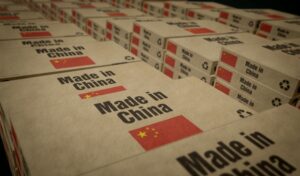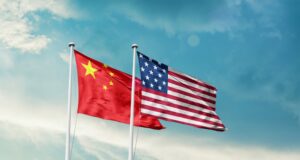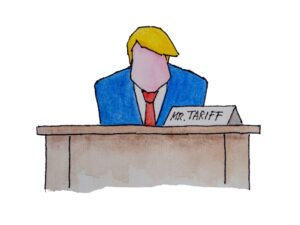How the China Trade Shock Impacted U.S. Manufacturing Workers and Labor Markets, and the Consequences for U.S. Politics

The following is an excerpt:
The first key finding of our study—and an unexpected one—from the perspective of places is that starting approximately one decade after the onset of the China trade shock in the early 2000s, trade-exposed local labor markets began to recover robustly. This recovery was enabled by the entry of a demographically distinct set of workers from the previous groups of incumbent workers. These entrants were disproportionately younger (under age 18 at the time of the shock onset), female, U.S.-born Hispanic, foreign-born non-Hispanic, and college-educated workers.
These new local labor market entrants disproportionately flowed into nonmanufacturing employment, typically into low-wage sectors with lower earnings than the manufacturing industries displaced by the China trade shock. This rapid, post-2010 transformation of the industrial and demographic structure of trade-exposed labor markets arguably reflects a manifestation of what the economist Joseph Schumpeter termed “creative destruction.”
The second key finding, from the vantage point of people, is that we find no similar worker-level dynamism. Although employment in manufacturing drops steeply and persistently in the two decades after the China trade shock, this contraction is due to the decline in workers entering manufacturing, not due to greater mobility out of manufacturing jobs by incumbent workers to other labor markets or sectors.
Indeed, only a small share of incumbent manufacturing workers moved to nonmanufacturing jobs, while another subset of these workers simply exited the labor market altogether. The majority, however, remain in manufacturing until retirement, albeit with diminished earnings growth. And opposite to the widely held expectation that incumbent workers in trade-exposed places would relocate to growing labor markets elsewhere, we instead find reduced outmigration of incumbent workers, perhaps reflecting the difficulty of relocating their households under economic duress.
Seen from the perspective of incumbent workers—particularly, U.S.-born, noncollege, White males, who are heavily overrepresented in manufacturing—the adjustment therefore looks static and largely unsuccessful, as another essay in our series also explores. These workers age in place as the labor market changes dramatically around them.
In short, labor market adaptation to the China trade shock appears generational. Incumbent manufacturing workers remained largely frozen in the declining manufacturing sector in their original locations, while a fresh set of workers—mostly younger, demographically distinct, and, in many cases, immigrants—entered employment in nonmanufacturing sectors of these local economies. At the level of local labor markets, this looks like a long-run adjustment, but it is easy to see how the dynamic of incumbent manufacturing workers slowly adjusting to living in rapidly changing places might give rise to divisive politics. We return to this point at the close of this essay.
05/13/2025 | David Autor, David Dorn & Gordon Hanson | Washington Center for Equitable Growth
There Are Dangers to Overestimating China

The following is an excerpt of the contribution of Margaret M. Pearson, Wilma V. Harrison Distinguished Professor, and Distinguished Scholar-Teacher in the Department of Government and Politics at University of Maryland, College Park, to a series of memos issued following an October, 2024 workshop convened under the auspices of the new Institute for America, China, and the Future of Global Affairs (ACF) at Johns Hopkins School of Advanced International Studies (SAIS).
U.S. policy can get China more right in three ways. First, it can better differentiate between low-level and high-level threats to economic prosperity as well as to national security. What belongs in these ‘threat buckets’ should be discussed and debated, following a principled risk-based approach. At present, nearly all sectors in the China-U.S. economic relationship are deemed high-level threats.
Where the administration can readily agree on high-level security concerns, such as for advanced semiconductors, policy responses might include outright bans and restrictions on a Chinese presence, or a rapid build out of U.S.-secured alternatives. In contrast, low-level threats should not be met with overreactions of the sort seen in outright bans by states on land sales to Chinese individuals or companies. The 25% tariffs on facemasks and regressive rules on low-value sales from Chinese online retailers such as Shein are other examples. In the green technology space, Chinese advancements in carbon capture do not rise to the level of a security threat, although battery technology may.
Second, U.S. policy should acknowledge the substantial costs to U.S. consumers and businesses of a securitization of everything. Numerous analyses emphasize the inflationary and job-destroying impact of tariffs that have already been imposed and of even more expansive measures—notably the possible revocation of China’s Permanent Normal Trade Relations (PNTR) status threatened by the Trump administration. Particularly when such tariffs are imposed on low-threat items, which many Chinese imports are, the costs—especially to U.S. consumers—are unwarranted. While our own industrial policies may bolster important sectors of the U.S. economy on some dimensions, job creation thus far has been disappointing.
Third, U.S. policy should correct weaknesses in many tools currently proposed or used to address concerns over threats from China. Tools cannot be effective if they lack carefully drawn goals and metrics—outcomes and timeframes— with which to monitor progress. When policies to catch up with China are unequal to the task, they should be abandoned. For example, the United States is already far behind China in solar technology and production capacity, with Chinese panels 44% cheaper according to a Wall Street Journal analysis.
Seeking to catch up is unnecessary and misguided. Building U.S. capacity for EVs behind a protectionist wall of tariffs and industrial policy may be a reasonable, if costly, economic decision, but only if the federal government has the follow-through and levers with industry to make it successful. Fundamentally, policymakers should ask: Is it worth the significant expense to catch up for products that are relatively low-threat?
02/03/2025 | Margaret M. Pearson | Johns Hopkins University School of Advanced International Studies
U.S. Tariff Outcomes Dependent on Trading Partner Responses

Navigating the complexities of tariff policy involves balancing three critical objectives—revenue, restriction and reciprocity—often creating a policy trilemma known as the impossible trinity. Prioritizing one goal can inadvertently undermine the others. For instance, maximizing government revenue through high tariffs can conflict with the goals of maintaining open foreign markets for U.S. goods and securing reciprocal trade concessions. These high tariffs may restrict imports excessively, harm industries that depend on foreign inputs, escalate trade tensions and provoke damaging retaliatory actions from trading partners, as evidenced by historical episodes such as those during the Great Depression .
Additionally, using tariffs to protect domestic industries can lead to market inefficiencies and resource misallocation. This trilemma poses a significant challenge for policymakers striving to develop effective trade policies that use tariffs judiciously. While higher tariffs might benefit certain sectors and encourage some firms to relocate production to the U.S., the broader economic impacts—including effects on consumer prices, consumption and global supply chains—are also ambiguous and can intersect with other economic and policy goals.
Moreover, these policies carry implications for redistributive fiscal policy. Gaining a deep understanding of the nuanced historical impacts of tariffs and the mechanisms through which they operate is crucial for crafting trade policies that minimize economic distortions, anticipate interactions with other policy priorities, and strike a balance between the protective and revenue-raising functions of tariffs and the advantages of reciprocal free trade.
05/13/2025 | Enrique Martínez García & Michael Sposi | Federal Reserve Bank of Dallas
Nearshoring in Latin America: Who Could Benefit Most?

In a global landscape increasingly defined by geopolitical uncertainty and the vulnerability of supply chains, reshoring and nearshoring strategies have emerged with unprecedented significance. These approaches aim to redefine the production and distribution of goods by relocating industrial operations either back to the home country (reshoring) or to nearby countries (nearshoring). Their objectives include mitigating risks, enhancing resilience, and streamlining response times to global market disruptions.
Reshoring involves relocating business operations back to the company’s home country. It can therefore raise costs related to labor, production inputs, and regulatory compliance, potentially reducing efficiency and competitiveness despite savings in transportation. Meanwhile, nearshoring involves relocating business operations to a nearby country, generally within the same region or continent as the company’s home country. This strategy leverages geographical proximity to enhance efficiency, improve communication and coordination, reduce costs, and mitigate offshoring risks. Geographical proximity facilitates supply chain management by reducing transit times, transport costs, and political or economic instability risks in far-off regions. It also allows for better supervision and quicker production adjustments in response to market changes.
However, while transport costs decrease, labor and production costs in nearby countries can be higher compared to more distant ones, potentially sacrificing competitive advantages associated with overseas production. The success of nearshoring heavily depends on nearby countries’ labor, infrastructure, regulations, bureaucracy, and stability—social, economic and political.
Unlike reshoring, nearshoring affects both the company’s home country and potential nearby destinations. Thus, this strategy offers Latin America a unique chance to become a competitive alternative for companies seeking to diversify their supply chains.
10/16/2024 | Felipe Larraín B. and Carmen Cifuentes V. | Americas Quarterly
WITA – We put the community in trade community.
Information about upcoming WITA and trade community events


